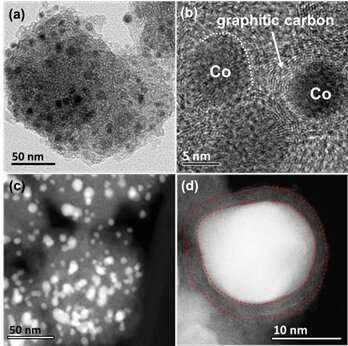Study provides new insights into indoor HCHO purification by transition-metal nanocatalysts

Room-temperature catalytic oxidation is an efficient approach to converting formaldehyde (HCHO) into harmless CO2 by using reactive oxygen species (ROS) on the surface of noble-metal nanocatalysts.
However, the high cost of noble metals impedes the wide-scale application for indoor HCHO purification. In addition, the room-temperature catalytic conversion of HCHO over conventional transition-metal oxides is restricted by their limited ability to generate ROS.
A study led by Prof. Huang Yu from Institute of Earth Environment of the Chinese Academy of Sciences provided new insights into indoor HCHO purification using transition-metal nanocatalysts with a similar efficiency as noble metals.
The researchers have previously reported the Co nanoparticles encapsulated in nitrogen-doped carbon with 85% of HCHO removal efficiency at room temperature. However, the size effect of Co particle on HCHO oxidation, and the interaction between Co core and the carbon layer, and its promotion toNO2 adsorption and activation remained unclear.
In this study, they prepared a series of N-doped carbon encased metallic Co (Co@NC-x) nanocatalysts to explore the effect of the Co particle size on HCHO oxidation.
The small-sized and highly dispersed Co nanoparticles were formed in Co@NC-0.25, which exhibited HCHO removal efficiency higher than 90% and possessed the highest specific catalytic activity, implying the vital importance of the size of Co particle confined in carbon for its reactivity.
The optimal Co particle size imparted the effective transfer of electrons from the metal core to the outer carbon surface, and thus leading to the enhanced oxygen activation. Density functional theory calculations demonstrated an evident charge transfer occurring from the metallic Co core to the carbon layer.
Moreover, the length of the O-O bond was elongated. These results revealed that the special Co@NC structure could supply an electron-rich carbon surface, facilitatingNO2 activation and HCHO conversion.
The optimized size of Co nanoparticles and the special metal@NC structure endowed the optimal utilization of active species and effective oxygen activation.
More information: Dandan Zhu et al, Formaldehyde Oxidation over Co@N-Doped Carbon at Room Temperature: Tunable Co Size and Intensified Surface Electron Density, ACS ES&T Engineering (2021). DOI: 10.1021/acsestengg.1c00080
Provided by Chinese Academy of Sciences




















